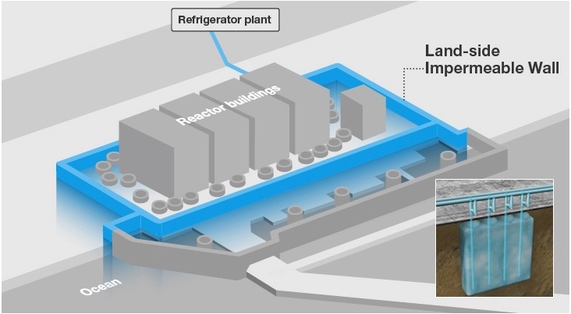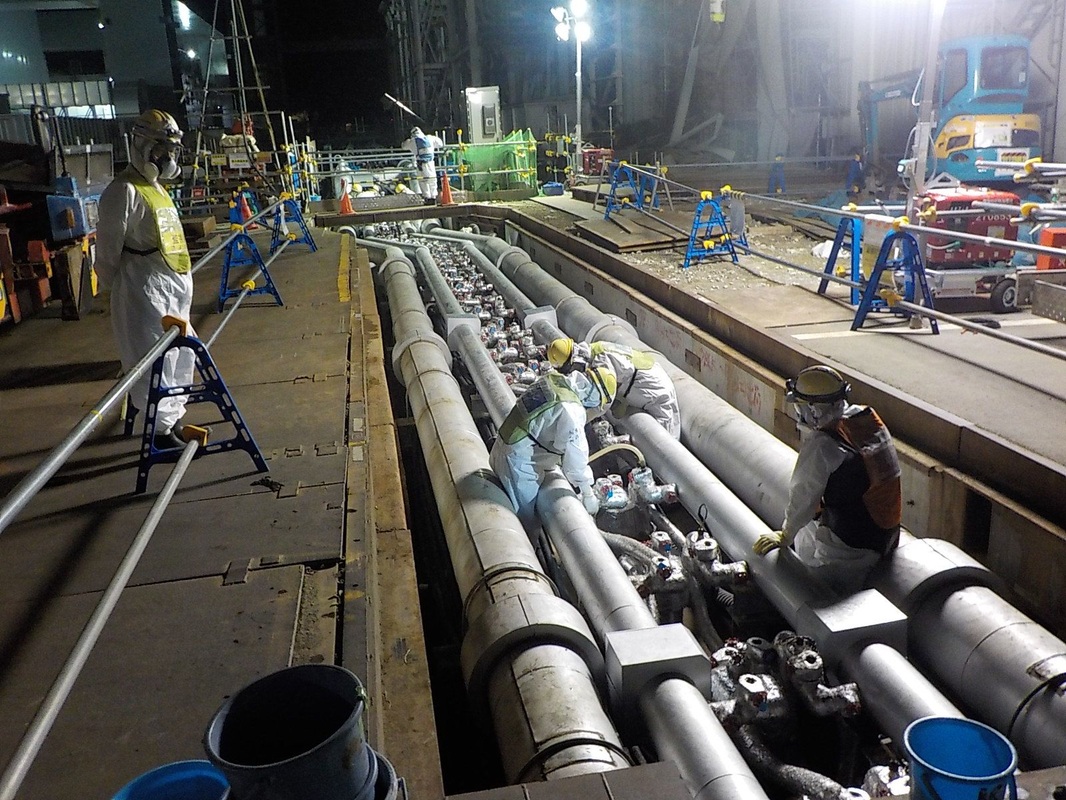|
On the eve of the fifth anniversary of the Great East Japan Earthquake, Tokyo Electric Power Co. (TEPCO) finds itself metaphorically treading water at the crippled Fukushima Daiichi Nuclear Power Plant (see blog post below) as it continues to inject cooling water into the three damaged reactors on a 24/7 basis. At the same time, it is dealing with the contaminated drainage from the reactors that mixes with incoming groundwater by partly cleansing it of most contaminants and storing it in huge steel tanks. But with over 1,000 full tanks taking up most available space and with a new tank being added every week or so, it’s clear TEPCO is barely keeping its head above water, so to speak. Yes, the company’s strategy of heading off the flow of incoming groundwater before it reaches the site by pumping it up above ground, cleaning it, then piping it into the sea has reduced the flow from 400 cubic tons to 150 tons daily, and TEPCO's workers should be applauded here. Nevertheless, this is still a stop-gap method to buy time. So what to do? Could TEPCO build an underground wall around the site, similar to the protective wall it has constructed along the length of the seaside facing the four reactors by driving steel sheets into the ground to bedrock depth? That idea was quickly ruled out. There are so many underground pipes and other obstacles located near the periphery of the site that such a wall would have to be constructed some distance from the plant. This would leave a large expanse of ground inside the wall open to the rain and so end up as groundwater. Then someone came up with the cool idea of an Ice Wall, as the project is now commonly called. The concept is ingenious. TEPCO has ordered built what it claims will be an impermeable, 1.5km barrier around the site by “simply” freezing the soil solid. This has the advantage, TEPCO assures, of sealing off the spaces around the underground pipes and obstacles, etc. The idea was tested in spring 2014 and found to be effective when temperatures were maintained below zero degrees C. TEPCO describes the concept as similar to freezing an ice rink. The government gave its blessing, sighed and agreed to pick up the bill on behalf of its poor citizens. Kajima Corp., a major civil engineering construction company, was hired because it already uses similar technology to prevent water seeping into tunnels it builds up and down Japan. In June 2014, Kajima began drilling the ground and inserting at regular intervals around the site’s circumference 1,570 vertical pipes to a depth of 30 meters. A solution of environmentally friendly refrigerated brine will be circulated through the pipes, and this will gradually freeze the surrounding soil. Kajima completed construction this February 9. Providing the Ice Wall works as advertised, it will surely be looked on as an impressive and innovative feat of engineering. It is certainly power hungry. I asked Naohiro Masuda, TEPCO’s Chief Decommissioning Office, how much energy it will consume, and the answer was, “Freezing and maintaining it will be equal to the power used by 12,000 to 13,000 average households.” Wow! Before the big freeze could commence, however, it got delayed when Japan’s Nuclear Regulation Authority( NRA) pointed out that if TEPCO went ahead and froze the soil on the land-side first, as was originally planned, the level of the contaminated water in the site’s basements could end up being higher than the groundwater outside the wall. This would cause the contaminated water to stream out into the space between the turbine buildings and the Ice Wall and find its way to the sea.
TEPCO has revised its freezing schedule and will instead freeze the wall facing the seaside first. At the time of posting, the company was still waiting final approval from the NRA for the go-ahead. This first appeared on my Forbes blog site: http://www.forbes.com/sites/jboyd
0 Comments
Leave a Reply. |
AuthorI cover the sci-tech-biz scene in Japan as well as current events. Contact me if you would like similar articles published on your site. Archives
April 2016
Categories |



 RSS Feed
RSS Feed
